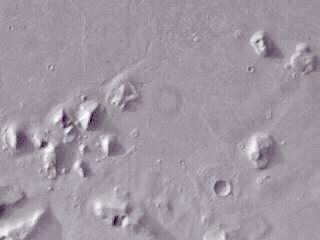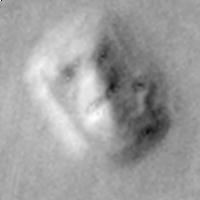Mirror images of each
side of the Face reveal a simian and a
lion, perhaps relating
this monument to the Sphinx in Egypt
Carl Sagan once said,
"Extraordinary claims require extraordinary proof." Thus, Stanley
V. McDaniel of Sanoma University in California began a detailed evaluation
of the Cydonia research. He found many top researchers' methods wholly
scientific. However, NASA's response continued to be one of ridicule
and avoidance. McDaniel discovered that although the two images of the
Face were well documented, NASA still clung to their debunked, 15-year-old
"trick of lighting and shadow" explanation. Under pressure from McDaniel,
NASA quietly retracted Soffen's original statement. On fractal analysis,
McDaniel points out that although it does not prove the "monuments" are
artificial, it definitely warrants some sort of further study. "We
must do it if we are going to be
scientists," McDaniel
says.
On August 7 1996, NASA
held a press conference to announce a find that Carl Sagan called "a glorious
discovery." A team of scientists from NASA's Johnson Space Center in Houston,
Texas, had been studying a football-sized Martian meteorite found in Antarctica
12 years before. Microscopic traces of carbonate, some organic molecules
and other minerals thought to be residue from biological activity
were found within the rock. This 3.6 billion-year-old sample also contains
strange, tubular-shaped structures that are very similar in both size and
shape to some bacteria found on Earth.
Suddenly, Mars was hot
again. Headlines about life on Mars covered the front pages of magazines
and newspapers. The X-Files even had an episode based on the concept. Like
a shot of adrenaline, this has rejuvenated the space program and interests
of returning to Mars.
Who knows. maybe there is life on other planets?
|


